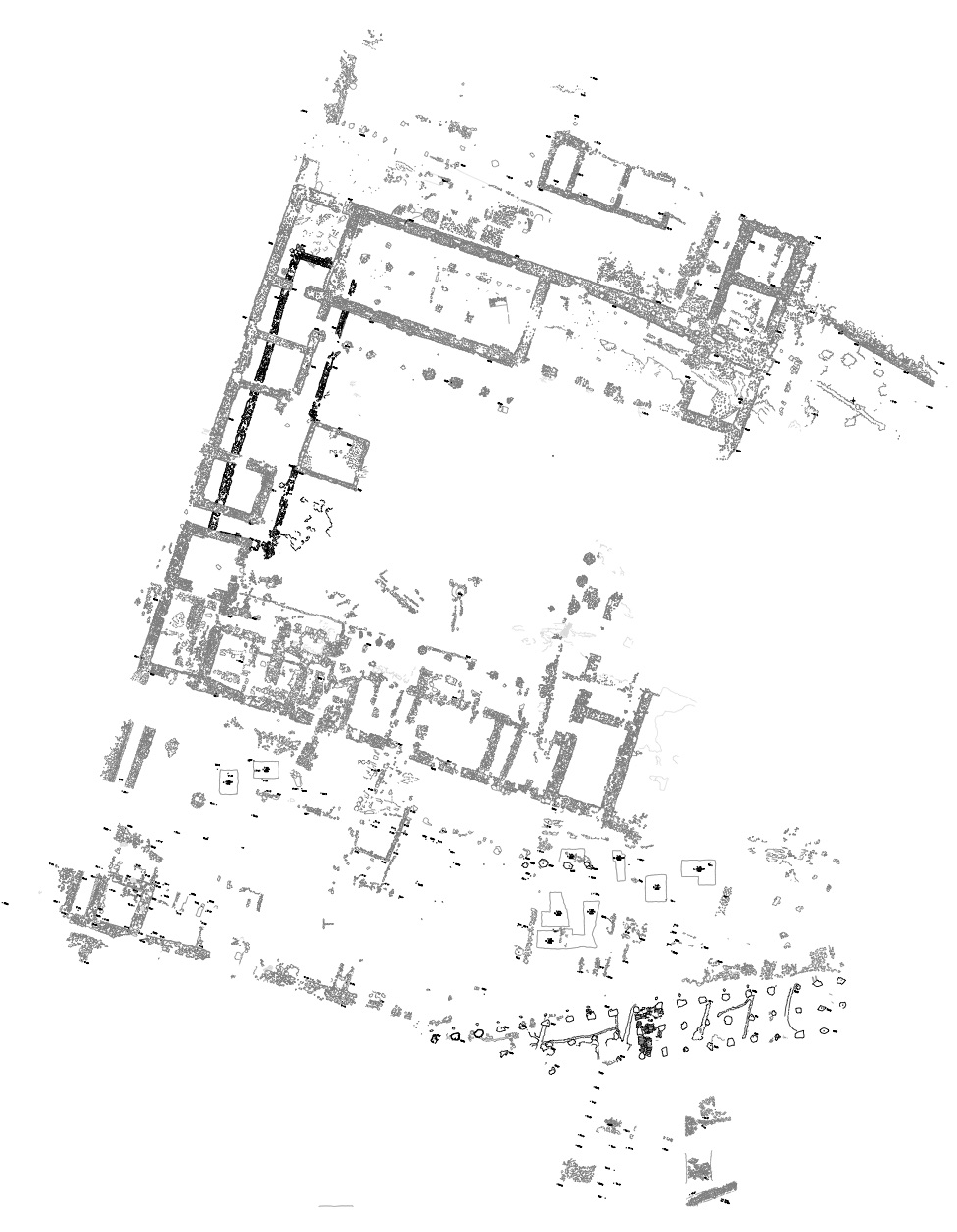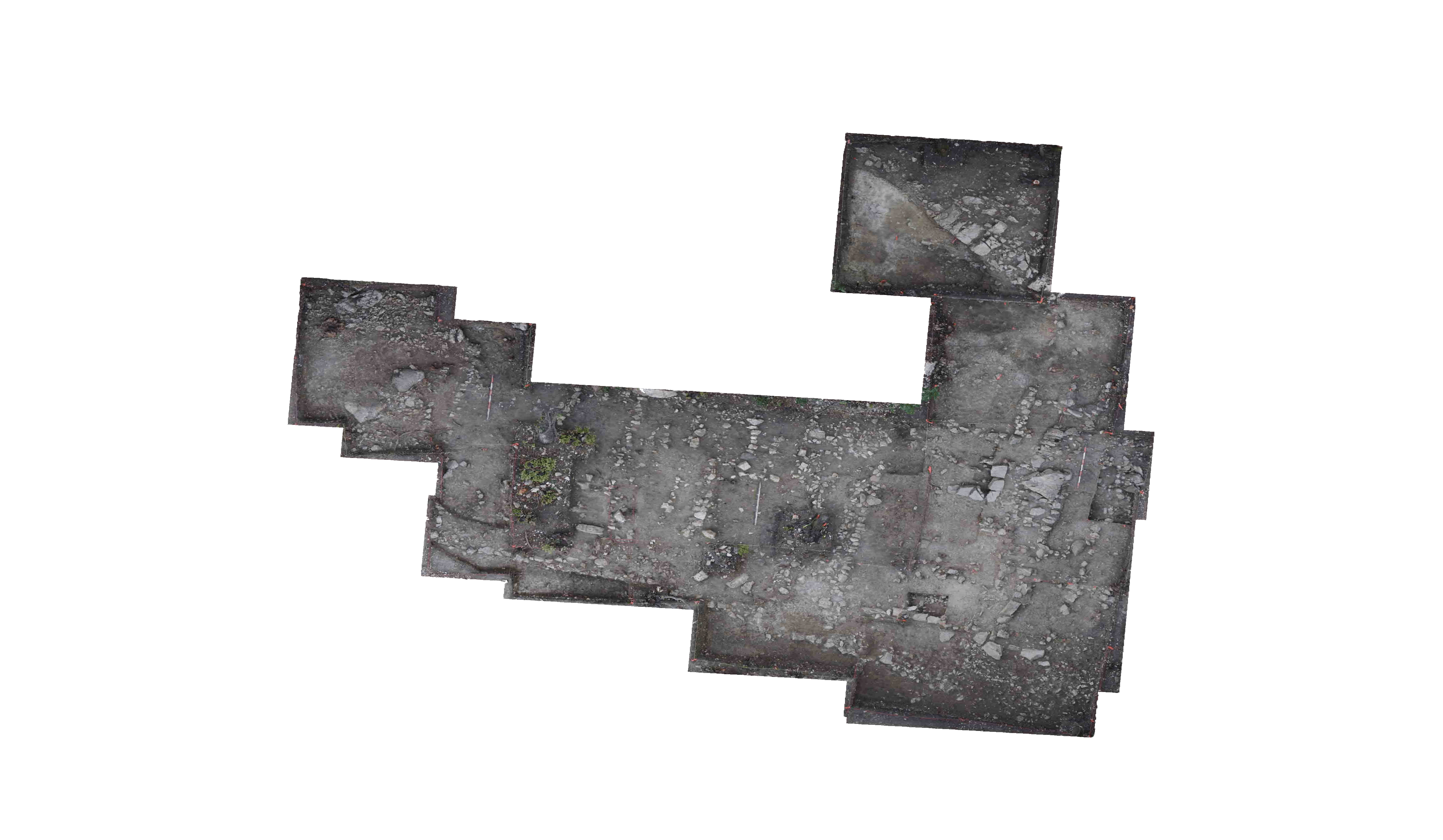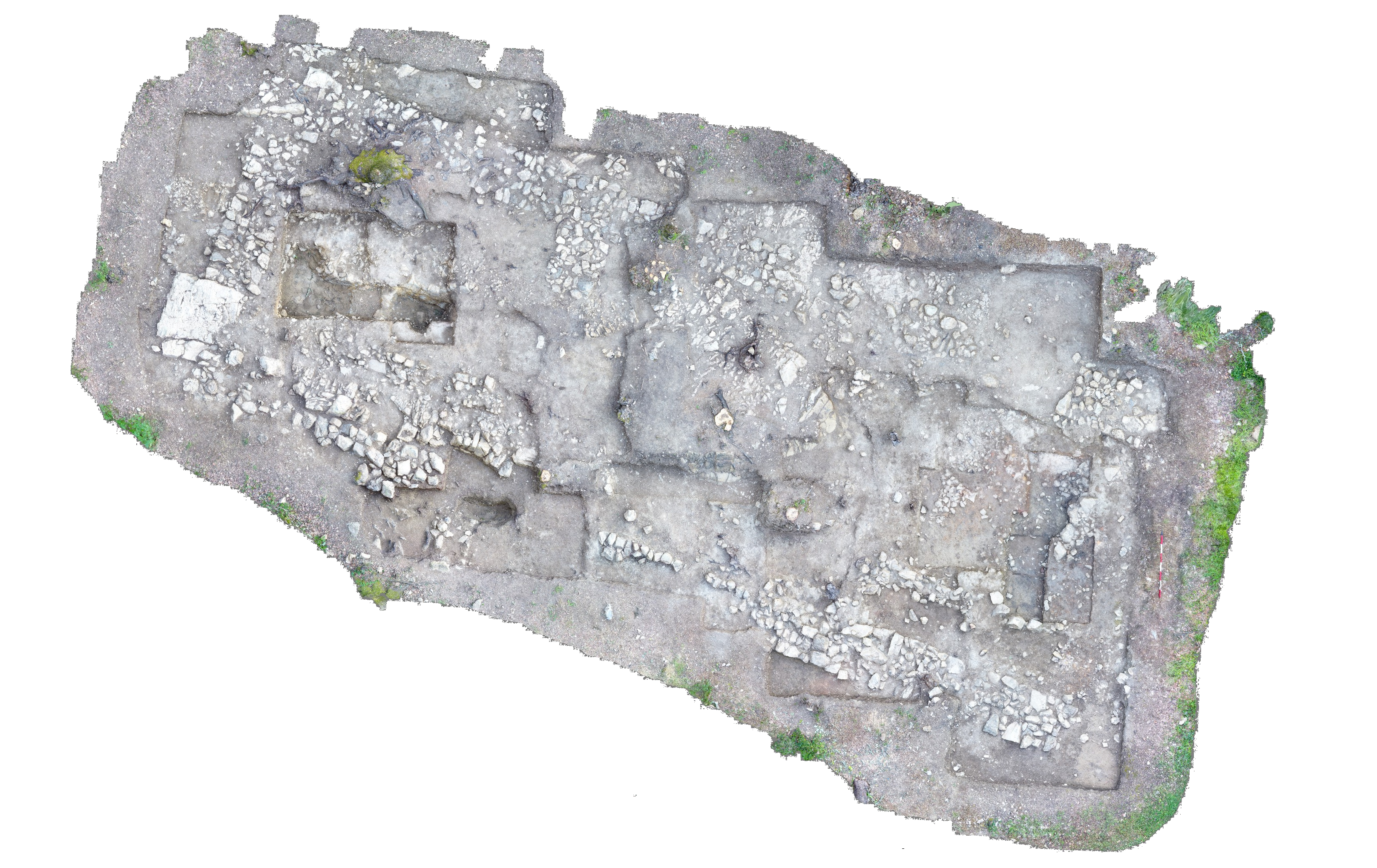Document Content
Methodology
The intended method of excavation in T110 is as follows. Soil will be broken up using a pickaxe and sifted by hand into buckets and removed from the trench. If more delicate features are encountered then hand picks, trowels, and/or leaf trowels will be used to break up the soil, which will be sifted into buckets and removed from the trench. Loci will be used to distinguish discrete events in the creation of the archaeological record, with new soil types, architectural features, and significant changes in the materials recovered warranting the creation of new loci. Any changes in soil type, artifacts types or quantities, or the appearance of features will be noted in the trench book and a new locus will be defined, measured, photographed, and recorded. The baulk walls will be trimmed regularly in order to gain a better understanding of stratigraphy.
A dirt dump for discarding all soil excavated from T110 is established approximately 3 meters to the northeast of the area of excavation. A rock dump for discarding all stones removed from T110 is established approximately 2.5 meters to the northwest of the area of excavation. Terracotta roofing tiles and plaster will be counted in bowls with a diameter of 28 cm and a maximum depth of 12 cm. Once tile and plaster have been counted by volume at the end of every day, they will be discarded in a tile dump which is established approximately 10 meters directly to the south of the area of excavation. Pottery and bone will be collected, counted, and saved separately as bulk finds in latte boxes. Latte boxes have the approximate depth of 23cm, length of 9cm, and width of 6 cm. Vitrified terracotta, slag, and amorphous iron will be special finds until more than 5 of each object is found after which they will also be collected in bulk and counted at the end of the day.
For special finds recovered during hand sorting into buckets, the coordinates and elevations will be recorded. In order to determine the coordinates, a plumb bob will be held over the location of the special find, and then the distance from two of the perpendicular baulk walls will be determined by extending a tape measure at a right angle from the string of the plumb bob to the string marking the boundaries of the trench. In order to determine the elevation of special finds, once again a plumb bob will be held over the find spot of the special find. Simultaneously, a string with a line level will be attached to a fixed datum point and will be pulled taut and level, so that it intersects with the string of the plumb bob. A tape measure will be held so that it runs parallel to the string of the plumb bob, and the elevation relative to the datum point may then be determined. As the absolute elevation of the datum point is known to be at 29.04 mAE, the absolute elevation of the special find may be calculated using the found relative elevation. Special finds then are sketched in the trench book on-site and are sent to the magazzino for cleaning, analysis, and cataloging. Any artifacts selected from bulk materials for cataloging will be made supplemental finds.
Excavation methods may change throughout the course of the season, as types and amounts of materials found, as well as the geology and topography of the trench, ultimately determine the best excavation method.
| Descriptive Attribute | Value(s) |
|---|---|
| Entry Type | methods |
| Title | T110-2024 (EJ) methods, p. 11-16 |
| Entry Year | 2024 |
| Trench Book Entry Date | 2024-07-07 |
| Start Page | 11 |
| End Page | 16 |
| Descriptive Attribute | Value(s) |
|---|---|
| Is Part Of Vocabulary: DCMI Metadata Terms (Dublin Core Terms) | Trench Book T110 2024 Vocabulary: Murlo |
Suggested Citation
Anthony Tuck. (2025) "T110-2024 (2024-07-07):11-16; methods from Europe/Italy/Poggio Civitate/Tesoro/Tesoro 110/T110 2024". In Murlo. Anthony Tuck (Ed). Released: In prep. Open Context. <https://opencontext.org/documents/7554060a-91a1-4b76-993e-7e90f9ba572a> ARK (Archive): https://n2t.net/ark:/28722/k2kw5vm1n

Copyright License
To the extent to which copyright applies, this content
carries the above license. Follow the link to understand specific permissions
and requirements.
Required Attribution: Citation and reference of URIs (hyperlinks)







